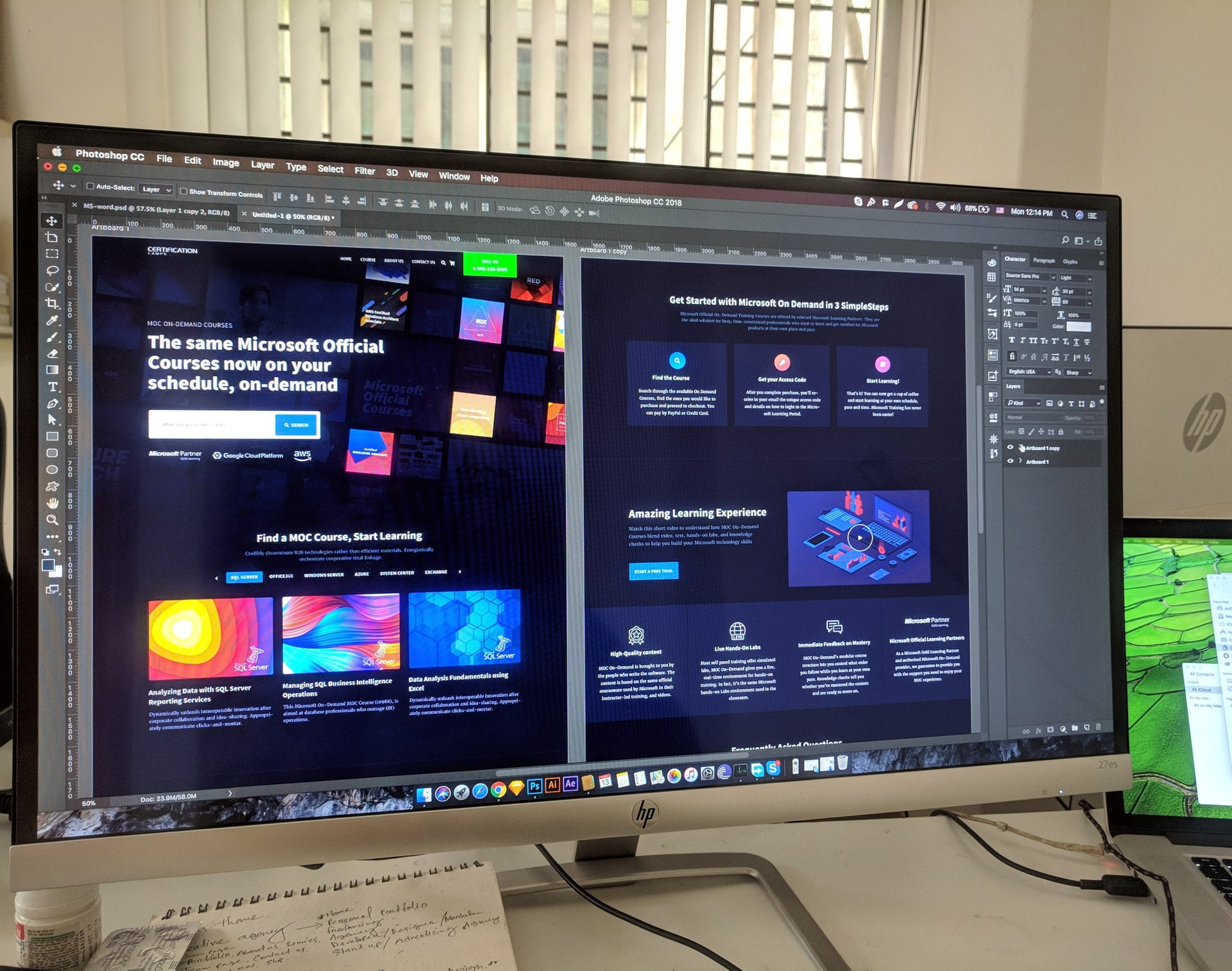How to Sell Web Design Services Effectively & Profitably

You design or build websites, you know you’re good at it, and you know the benefits it holds for businesses. The thing is the people on the other side of you. The business owners and clients—not all of them know this and are ready to believe it. That’s why learning to sell your web design services is just as important as how you know how to do it.
However, not everyone’s born to be great speakers, much less great salesmen. A lot of us sweat buckets over the idea of pitching something to a client. But don’t worry too much yet. There is hope. Here are some things you have to remember about selling web design effectively and profitably.

What You Need To Know About Selling Web Design Services
1. Web Design vs. Web Development
Remember this: web design and web development are two completely different things. If you’ve been interchanging them, then that might answer why you haven’t been making sales.
While the two are different, they’re also part of one extensive process. Think of it like constructing a building. Web development is where you build the structure. It’s logical, straightforward, and gives you a good base. Web design follows when you cover up all the beams and bare cement and beautify the place while adding more functionality to each room. It’s where you make it your own and is the subjective and emotional part of the process.
When it comes to the latter, everybody has a different approach, and there are thousands of factors that can affect a client’s preference.
2. Understand What Clients Want
In selling website design services, you have to understand that it’s not so much about the design but more about what the procedure can accomplish. To connect with your clients, go beyond that desire for a new and shiny website. Dig deeper.
Do they want to make more sales? Do they want to be recognized as a serious competitor? Do they want to create more opportunities with less work?
The more you understand these deep intangible desires, the more you can focus on them rather than font size, colors, drop shadows, and all that.
3. Understand How Decisions Are Made
Even if it is a business matter, people lead with their guts. If something feels right, we’d want to buy if we clicked with the person we talked to. Our brain then follows the logic to justify that it is indeed an intelligent decision.
That is why when you’re selling your design services, you shouldn’t lead by justifying your services first. That’s for your client to decide. You should connect to their emotional needs and desires by leading with the benefits of what you have to offer. When you have that hooked, it’s time for you to give the rationale and make them feel they’re making the right choice.
4. Why People Say No
People will come up with a million reasons to say no, and the best way to deal with them is to be prepared. Here are some of the most popular ways prospects say “no,” “not now,” or “not you,” and a little tip on how to respond.
- “I don’t need a website. I already have social media.” Explain how a website allows them to control their story’s narrative and all the other ways a website is a powerful tool they can’t do without in this day and age.
- “We can’t afford that.” People would say this because they don’t have the budget, they’re bargain hunters, or they don’t see the value of your proposal. If it’s the first one, thank them for their time and follow up in a few months. If it’s the last two, better walk away and keep improving your pitch.
- “I’m going to make the website myself, so I don’t need a designer.” With the advent of so many site builder tools, it’s becoming easier for people to design their websites for lower prices. Still, there are advantages to having their websites designed professionally, and that’s what you have to explain plainly and clearly.
- “The other designer said they could do this and that a lot better than you.” A lot of designers will make insane promises just to get the prospect. When you do get someone like this, it’s best not to fight them. Instead, give them a fact-based reality that you can deliver on. Just remember: Don’t make big promises you can’t deliver!

The Web Design Sales Process
This is where many people start sweating but trust us; it isn’t as bad as it seems. Here are some tips to help you build a solid sales process and to start selling designs.
Talk Less and Listen More
Stop talking. That’s the first step. Talking about yourself and why you’re so good at what you do isn’t the way to get new customers. It’s listening and asking questions.
You need to understand where your client is coming from and their hopes, challenges, and fears to drill down on what’s important and know what solution to offer them. Clients also value being listened to and would help you build a great relationship with them. And if you ever encounter silence in the conversation, don’t panic or start rambling out of awkwardness. Learn to let it linger and let your client fill in that silence.
Leave the Trivial Details for Later
Unlike dates, you can’t start your sales call with small trivial details. You have to hit hard and dig deep for your client’s challenges and expectations because, in that first interaction, you’re not just selling the design. You’re selling your expertise, experience, process, and outputs. So leave the small things like fonts and color for later and only worry about them when you’re getting paid to worry about them.
Ask the Right Questions
We know we’ve been telling you to get to know your clients well, but it can be challenging for some clients without a good nudge. To help them along, ask them the right questions. For instance, ask them to tell you about their business and why they’re having the project done. You can also touch on how they expect it will change their business. Look for their pain points and the issues they’re facing, and craft your pitch around that.
You also have to consider asking about some essential details like budget, stakeholders, expectations, timeline, content, or reference samples.
Always Be One Step Ahead
As much as we all want it to, sales calls don’t just end up with happily ever after deals. Even if your clients are already leaning towards buying your services, they will understandably have concerns, especially if they’re not very familiar with how websites work. You need to be prepared for this.
If they’re worried about the final output, share your work process. Assure them that their inputs will be heard, and let them know how you handle any revisions, additional work, or out-of-scope tasks. If they’re worried about what’s expected of them after completing the project, guide them and offer options to get help.
Think of everything you might be concerned about in their shoes, and be prepared to answer those. They’re spending money on you, and they understandably want to be assured that they’re spending it wisely.
Finally, when everything’s settled, it’s time for you to draw up the agreement and send it over to your client. Keep in mind that you don’t stop building a relationship with your client here because they’re your key to building a more extensive network of clients in the future. Instead of treating them as just another name on a check, treat them as partners and think of the project as a partnership.



Leave A Comment